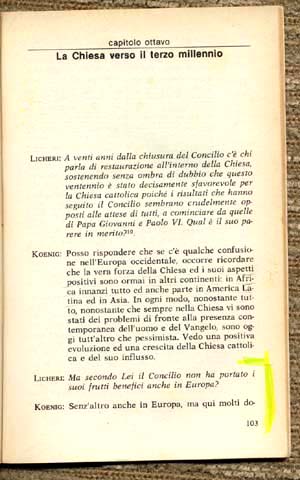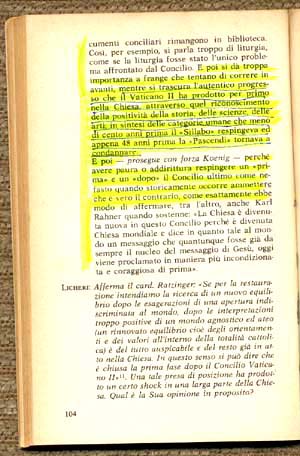Cardinal Franz Koenig, late Archbishop of Vienna, was a prominent figure of Progressivism. He played a key role in preparations for the Second Vatican Council.
He is known as one of the first protagonists of the Vatican Ostpolitik with Communist regimes. In fact, he was the one who negotiated with the Hungarian regime to end Cardinal Mindszenty's heroic anti-communist resistance. For this reason, Paul VI sent him as his messenger to order Mindszenty to leave the American Embassy in Budapest and go to Rome.
Mindszenty was resisting in Budapest as Primate of Hungary but also, it can be said, as successor to the Hungarian Crown. According to an old tradition, always that the the Throne of Hungary was vacant, the Primate of Hungary would temporarily assume the power of government until a new Monarch was chosen. The Hungarian monarchy had been restored in 1920 and continued until 1946 when the government of the country fell to Communism. With this, the Archbishop of Eztergom automatically was empowered as successor to the Crown.
Cardinal Mindszenty was arrested in 1948 by the Communist government, condemned to jail, and freed eight years later in 1956 when he entered the American Embassy as a political refugee. He remained there as a symbol of anti-communist resistance until 1974, when Paul VI issued the order for him to leave. Therefore, this order - delivered through Koenig - represented a symbolic end to the Catholic spiritual and temporal resistance against Communism in that country.
Koenig was also an important personage who promoted Ecumenism, acting as President of the Pontifical Council for Dialogue with Non-Believers from 1966 to 1981.
Cardinal Koenig was also the architect of the election as Pope of the Cardinal of Krakow. It was under his patronage that John Paul II was chosen Pope in 1978.
It would be difficult, therefore, to find a personage of greater authority in the Conciliar Church.
In the book-interview Chiesa dove vai? [Where is the Church Going?]Cardinal Franz Koenig answered questions by journalist Gianni Licheri on the Second Vatican Council and the future of the Church, as well as on other topics.
Koenig believed that Vatican II was opposed to the past of the Catholic Church represented by the Syllabus and the Encyclical Pascendi. He takes an antagonistic position toward that past. The document we reproduce is quite evident in that regard.
Top right is a picture of the book's cover; at right, photocopies of the Italian text. Below, we present our translation.
Licheri: "In your opinion, did the Council give its beneficial fruits in Europe also?"
Koenig: "Yes, absolutely, also in Europe, but here many conciliar documents didn't leave the shelves. For instance, there is a lot of talk about liturgy, as if it were the sole problem that the Council faced. Further, people give too much importance to the fringes [the radicals] that tried to push ahead, and forget the authentic progress Vatican II produced. In the Church this progress took place primarily through the acknowledgment of the positive aspects of history, the sciences, and the arts - in short, those human categories that less than 100 years earlier the Syllabus had rejected and only 48 years before [the Encyclical] Pascendi had again condemned.
"Why, however, should we fear a 'pre' and 'post' Vatican II or completely reject the latter as disastrous when historically we should admit the opposite, as Karl Rahner had the opportunity to affirm? He said: 'The Church was renewed at this Council because it became an universal Church, and as such it sent the world a message that, although always the message of Jesus, today is proclaimed more completely and courageously than before.'"
(Chiesa dove vai? Gianni Licheri interroga il Cardinale Franz Koenig, Rome: Borla, 1985 pp. 103-104).
|


 |

Posted on October 8, 2005
|
